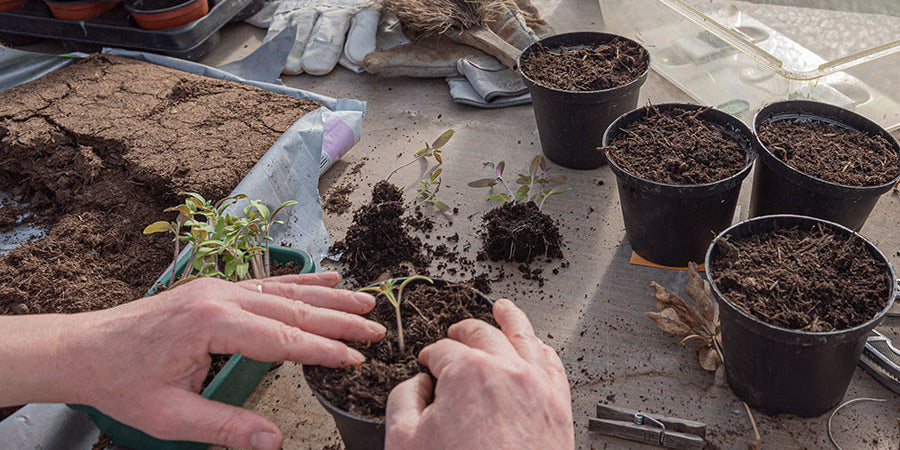April Sowings & Advice

Greetings from East Lancashire!
We are not known for our vegetable production in this part of the UK, but we are still keen amateur growers. Over the years I’ve grown in many different locations around my base near Blackburn. These include school grounds, urban gardens, allotments and parks in Manchester, Salford, Rossendale and the Ribble Valley. Growing in so many different locations has taught me a very important lesson – get to know your own ‘micro-climate’. Every growing space has one of these, whether it’s a windowsill, balcony, allotment or backyard.
Your ’micro-climate’ is made up of several elements; amount of sunlight, wind, soil, rainfall, air humidity, road traffic, surrounding buildings and trees/hedges. The combination of these in a location will create very specific conditions that affect plant growth. By observing these conditions and how they might vary during the different seasons of the year you can start to appreciate what your vegetables have to cope with as they grow. So before you choose your vegetable seeds, spend some time thinking about where you are going to put them as they grow.
My garden has a damp, humid climate and becomes a frost pocket in the winter. As a result is takes a while for the soil and air to warm up in the spring. Added to that we have clay soil with poor drainage. Does any of this sound familiar to you? Did I mention the strong westerly winds as well? So, given the choice, not many self-respecting vegetables would choose to grow in my garden. Nevertheless, if I stay mindful of my ‘micro-climate’ I can still choose vegetables that will thrive in particular locations.

My cool garden means that the first weekend in April is a busy one when I sow lots of hardy vegetables seeds. As I’m lucky enough to have a greenhouse and I use it to give my seedlings some warmth before they go into the ground. I don’t heat the greenhouse, but it gets a good amount of sun and gives protection from the cold spring winds, both of which help seed germination. If you don’t want to spend a lot of money on a glass greenhouse, try a zip-up plastic one or recycle old double-glazing panels to provide some shelter for your seedlings.
 This year I’m sowing my favourite Turnip; Purple Top Milan. I prefer to eat it as a ‘baby’ turnip, so I harvest it when it’s only twice the size of a radish. It’s sweeter and less peppery when small and I sow a few rows every four weeks between April and June so I can spread out the harvest time over the summer.
This year I’m sowing my favourite Turnip; Purple Top Milan. I prefer to eat it as a ‘baby’ turnip, so I harvest it when it’s only twice the size of a radish. It’s sweeter and less peppery when small and I sow a few rows every four weeks between April and June so I can spread out the harvest time over the summer.I’m also growing the ever-reliable ‘Kelvedon Wonder’ Pea; I’ve grown these for several years in the local clay soil and it copes well with cooler temperatures and appreciates the damp conditions. These are shorter peas; growing 45cm tall and so are better suited to container growing but remember to use large pots or growing sacks (at least 35cm deep) and keep them well-watered. To get them off to a good start I sow them in biodegradable containers (aka toilet roll centres!) in the greenhouse. After 4 – 5 weeks I’ll plant them out into their permanent growing place.
New varieties I’m trying this year include Radish ‘Watermelon’, with a white outer skin and raspberry pink centre, which will also grow well in containers. I’m starting off the seeds directly sown into a trough, mixed in with some ‘cut and come again’ salad leaves (Kale, Pak Choi and Rocket are all tasty, hardy varieties). I’ll keep the trough in my greenhouse until the seeds have germinated. Once the seedlings have three pairs of leaves, I’ll move them outside and get them used to the outdoor temperatures. I’ll harvest the salad leaves as soon as they grow 10cm tall; snipping a few leaves from each plant but leaving the rest to keep growing.
Another salad leaf plant I’m experimenting with this year is Chicory Palla Rossa; it has crispy leaves that tasty great in autumn and winter salads. This variety takes about 3 to 4 months to mature if you want a whole head, but you can use the ‘cut and come again’ method to harvest leaves from the plants before they are fully mature. As this one needs a warm temperature to germinate, I’m starting it off in my greenhouse first and then I’ll put the small plants in my raised bed. You could also start it off on an indoor windowsill, but make sure it’s got plenty of light and not too much heat or it will get ‘leggy’ with stems that are too thin and tall. Turn the pot or tray twice day so the seedlings don’t lean over towards the sun too much.
Read more about Sue's horticultural expertise and projects on her website HERE





